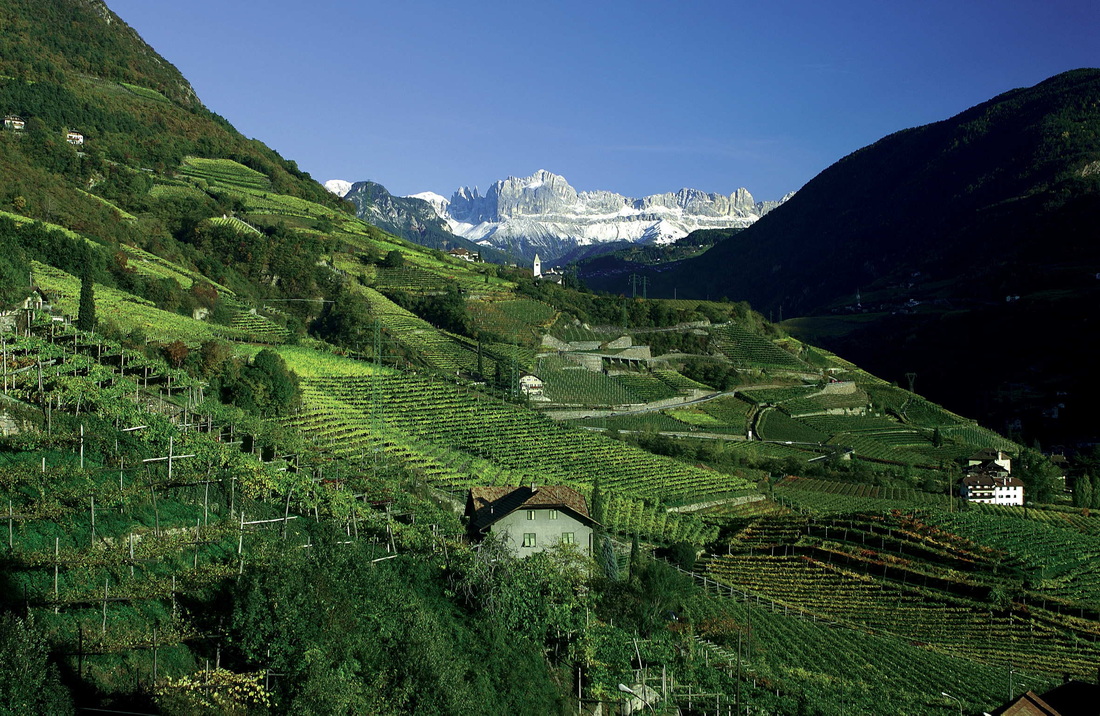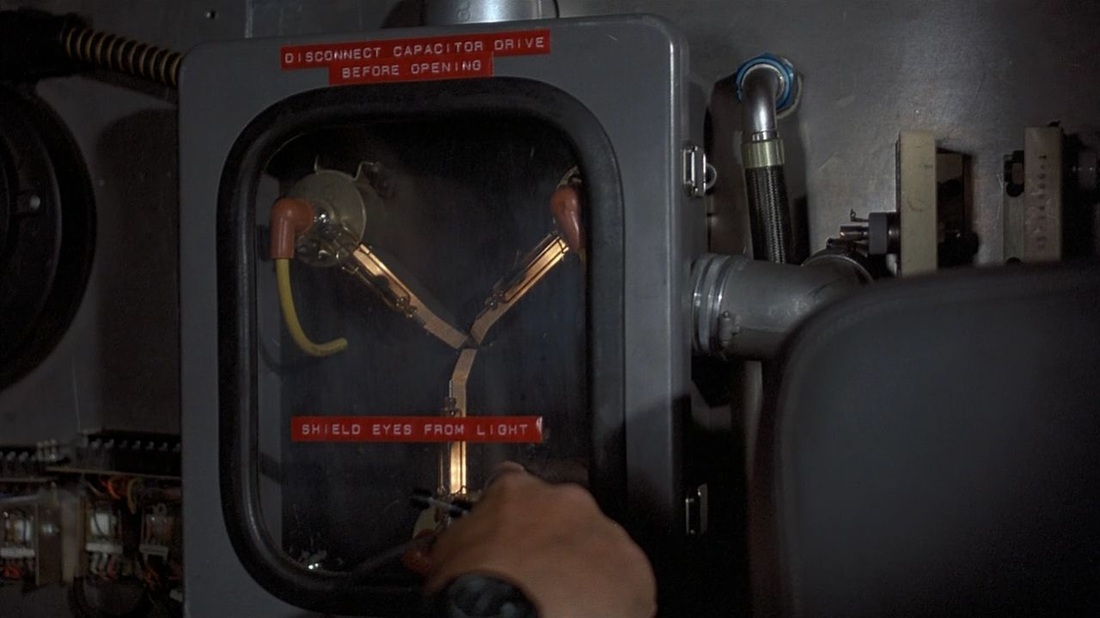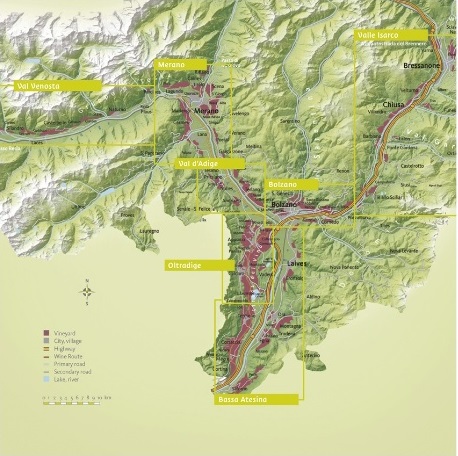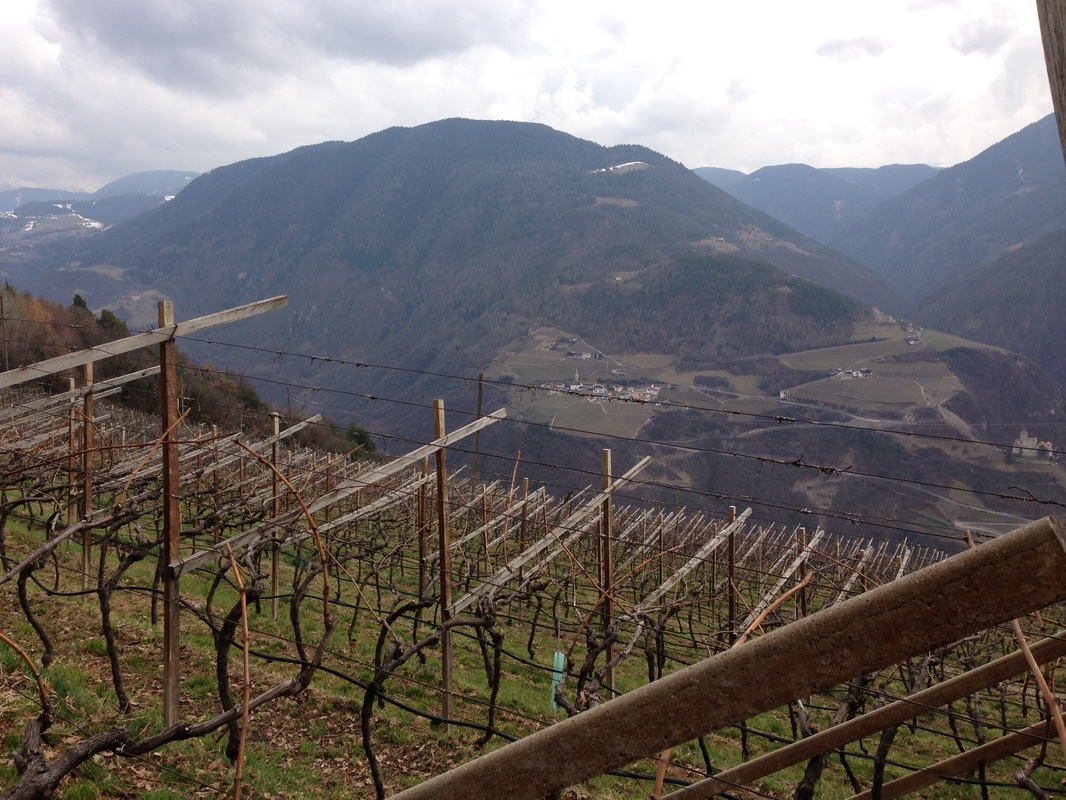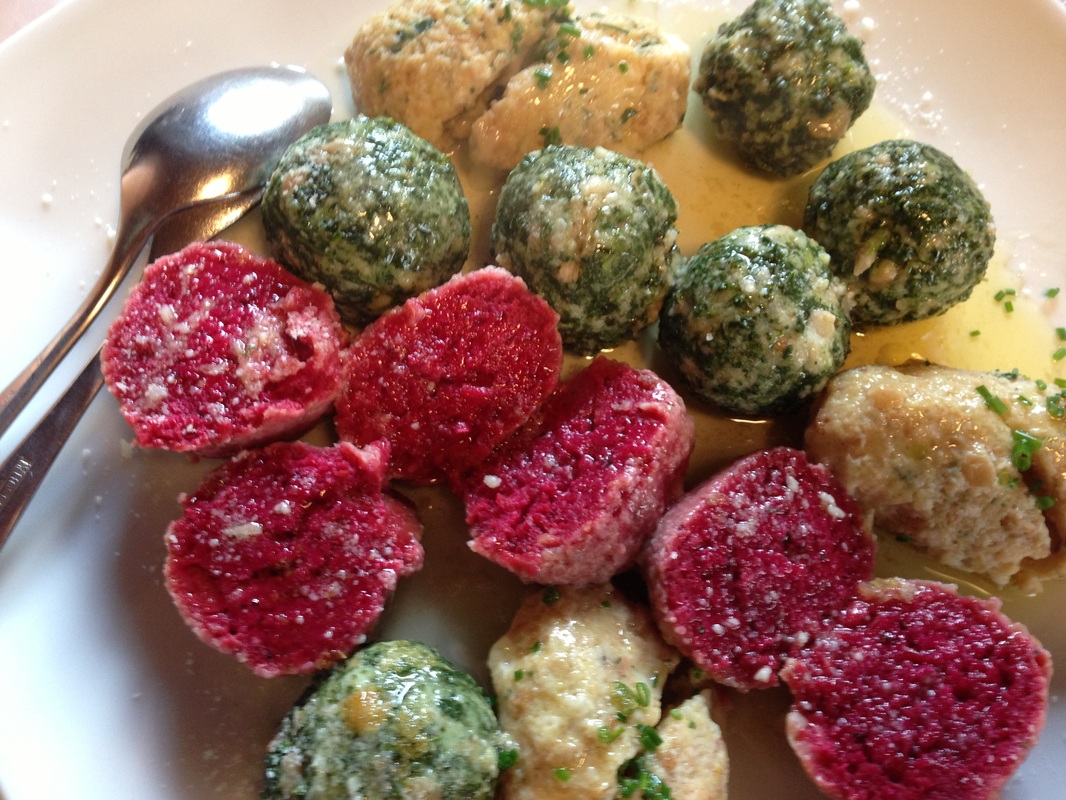n
Several times during my recent stay I overheard one of the local winery contacts say that they had gone to school in “Italy” or were about to head south to vacation in “Italy.” I would remind said person that we actually were in Italy only to be met with a shrug and the briefest hint of a smile. Regionality, as it does elsewhere in Italy, runs deep. I can’t blame any of them. One look at Bolzano and its surroundings and you’re definitely not in mainstream Italy, much less Kansas. Take, for instance, the remarkably steep hills encompassing the Santa Magdalena DOC that jut up dramatically from the northwest section of the city you’ll know why. With its black diamond slope terraced vineyard, one could easily be in the Wachau of Austria or the Mittel Rhein of Germany.
In terms of wine production, Alto Adige is one of the Italy’s smallest regions with just over 5,000 growers farming some 13,000 acres. Napa Valley, by comparison, has over 39,000 acres under vine while the Chianti DOCG has over 41,000 acres planted. But quality here is king with over 98% of the wines produced of DOC level. The region’s climate combines alpine influence with warm temperatures during the growing season. That’s because the Dolomites and the Swiss and Austrian Alps in the north act as an enormous rain shadow protecting the area from temperature extremes during the winter. Mediterranean influence from the south makes for some of the hottest temps in Italy during the summer. Together both create wide diurnal shifts with a marked separation between high daytime and low night temperatures. For viticulture, that means the fruit—both apples and grapes–achieves good ripeness levels and yet retains high natural acidity, a magic combination that makes the wines versatile and in some cases lends considerable potential to age.
The Alto Adige region is patchwork of valleys and mountains with vineyards planted between 600 and 3,300 feet. The soils range from calcareous and limestone near the ever-present Dolomites, to volcanic porphyry and moraines, the remains of glaciers that retreated from the region some five to six million years ago. The region is home for over 20 grape varieties with the soil largely determining the variety planted; whites on the chalk and limestone closest to the Dolomites and red grapes thriving in the Moraines and porphyry-based soils.
Think Back to the Future movies and the Y-shaped circuit that enabled the stainless steel DeLorean to journey through time (http://backtothefuture.wikia.com/wiki/Flux_capacitor). The comparison works. Alto Adige’s three major valleys form a letter “Y” with Bolzano as its hub.
To the northeast is Valle d’Issarco, just minutes away from the Austrian border. Chiusa and Bressanone are the most important towns and the historical abbey, Abbazia di Novicella, is one of the leading coops – producers. The abbey dates from the 12th century and the Santa Maria Assunta is one of the most beautiful small basilicas I’ve ever seen—it’s a must see. Here in the Valley d’Issarco the soils are mainly granitic and white grapes predominate with some excellent Schiava produced as well.
The Val Venosta lies to the northwest with Merano the major city. The Venosta is the driest region in Alto Adige and also one of the centers for apple production. It’s the most scarcely planted valley of the three with poryphry and volcanic soils; whites predominate plantings. The region is also known for its mild climate and Merano has long been regarded as an excellent spa town.
The Oltradige valley in the south is the largest of the three valleys and the heart of Alto Adige wine production. Appiano and Caldaro are the most important villages. Limestone and porphyry soils are found as well as moraines. White wines account for 56% of the production with vineyards planted between 1,000 and 2,300 feet. The village of Tramin, a spiritual home to the Gewürztraminer grape, is also located here.
At the center of the flux capacitor is the city of Bolzano, one of the warmest parts of the entire region. Here the vineyards of the Santa Maddalena DOC rise steeply out of the northwest part of the city. The soils are poryphry-based and perfectly suited to Schiava-based reds as well as Lagrein.
Coops: a Reality Check
One belief I had to quickly shed while in Alto Adige was a long-held notion that coops are mere factories cranking out oceans of wine mediocre in quality at best. Over 70% of the wine in Alto Adige is coop-produced and a lot of it is very good to outstanding. In talking to winemakers, I learned that the region’s vineyards are severely fragmented in terms of ownership just like Burgundy. Thus, like Burgundy commercial winemaking on any scale can only exist in a cooperative context. Vineyard owners are generally non-wine professionals and have had the vineyards passed down to them by older generations. The relationships between coop winemakers and vineyard owners were closer to a négociant/owner in terms of the emphasis on quality fruit and lower yields. Terlano is a perfect example of one of the several Alto Adige coops making exceptional wine.
Here’s a quick survey of the major varieties from the region.
Whites
Pinot Bianco: grown throughout the region. Pinot Bianco isn’t usually a grape that gets everyone dangerously excited but I was surprised, no make that shocked, at how well it can age give the right conditions. To point, Klaus Gasser of Terlano opened bottles of the winery’s Pinot Bianco from 1982 and 1955. The ’55 was deep golden in hue and still very fresh and alive. So much for the belief that whites don’t age well. Old wine aside, Alto Adige Pinot Bianco shows bright citrus fruit with white blossom notes on the nose and steely minerality on the palate. It’s a delicious shellfish wine.
Pinot Grigio: there’s an ocean of Pinot Grigio made all over northern Italy, much of it unremarkable. The best wines from the variety are definitely from Alto Adige and combine bright green pear/pear skin, and juicy citrus fruit with wet stone minerality.
Gewürztraminer: it’s interesting to note that in Jancis Robinson’s just published and completely brilliant tome “Wine Grapes” (over 1,200 pages and weighing in at 6.7 pounds) a listing for Gewürztraminer is missing in action. Searching the index one is pointed to the Savignin entry with the explanation that what we call Gewürztraminer is actually a genetic mutation of the other Alsace grape. Not sure what that does to the village of Tramin’s claims to be the ancestral if not spiritual home for Gewürztraminer but there you are. In terms of style, Alto Adige Gewürztraminers have all the pungent floral and spicy fruit qualities one expects from the grape without the blowsy quality. At best, the wines are luscious, spicy, and
perfumed. They’re also delectable with soft-ripened cheeses.
Riesling: the few Rieslings I tasted during the week reminded me of scaled down versions of Austrian bottlings with tart citrus fruit and stoney minerality.
Grüner Veltliner: one comes across Grüner in the north near the Austrian border. Here the style resembles the lighter versions from the Austrian Kamptal region versus the richer Federspiel and Smaragd wines of the Wachau. Still there’s plenty of the peppery and slight vegetal notes that make Grüner so delicious.
Kerner: another grape that usually goes under the radar and for good reason—it’s not exactly riveting. But I did find several wines, most notably the Praepositus from Abbazia di Novacella, to be delicious, with ripe Fuji apple and quince notes and a wonderful floral quality.
Sylvaner: I’ve long thought the Silvaners from Franconia (especially those from Hans Wirsching) to be the best on the planet. Now I’m more than willing to concede that there are several producers making outstanding Sylvaner in Alto Adige with all the smoky succulent apple/pear and tart citrus fruits one could hope for.
Sauvignon Blanc: here is really the only instance I found a bit of identity crisis among all the Alto Adige wines. Not really a surprise given that Sauvignon Blanc suffers the same wicked fate in California as well–not knowing whether to emulate New Zealand or Sancerre, and sometimes heading directly in between with unique, sometimes bizarre results. The best Alto Adige Sauvignons were sharply etched and citrus-dominated while others suffered from either too much sulfur or too much oak. However, there is great promise for the grape here.
Moscato Giallo: thought to have been brought to the region by the ancient Romans. Dry and succulent, fully dessert sweet versions are
made.
White Blends: blends based on Chardonnay, Pinot Bianco, Sauvignon Blanc, and Pinot Grigio are a long-held tradition in Alto Adige, and they can be quite good as well as age worthy. In particular, Manicor’s Reserve della Contessa and Terlano’s Nova Domus Riserva are outstanding.
Reds
Schiava: I’ll go out on a limb here by saying the next uber geek hipster red wine will be Schiava. It’s a wonderful combination of Pinot-elegance and tart Barbera acidity with unique savory qualities. Light in color, fairly concentrated, and Beaujolais-like, it can be served chilled and goes with any and everything. You might see it also labeled as Vernatsch or Edel Vernatsch (remember the German influence!). The best Schiava-based wines are from the Santa Maddalena DOC where they are blended with a maximum 10% Lagrein. Try one—it’s delicious!
Lagrein: other than ease of pronunciation (it rhymes with wine), Lagrein could also be the next total geek wine. Malbec-purple in color but with Merlot-soft tannins and a tart, savory, and floral character all its own. Another must try.
Pinot Noir: the Pinots I tasted during the week reminded me of Spätburgunders from Germany with tart cranberry/rhubarb fruit, and beet, tea/herb, and earth notes. Elegance and finesse are common hallmarks.
Merlot: primarily grown in the warmer south closer to Trento; bottled both as a single varietal and blended with Cabernet Sauvignon. The best examples have lush black fruits, herbal notes and minerality.
Cabernet Sauvignon: ditto above, with the best examples showing vibrant blackcurrant and herb notes with clay earth.
Moscato Rosa: my new favorite sticky. Moscato Rosas are luscious, just-right sweet, and spicy. Chocolate wine!
Apples! Alto Adige is the center of apple production in Italy and one of the major suppliers to the European continent. The valley floors are filled with apple orchards with vines on hillsides and terraces. However, a high bounty is placed on top orchards grown on steep hillsides.
Foods: when in Bolzano, makes sure to try the local dumplings called knödels, made from cheese, beets, speck (local ham like prosciutto), or spinach. The crunchy unleavened bread called schüttelbrot is also delicious.
Restaurants: Patscheiderhof is an old farmhouse restaurant outside Bolzano built in 1776 that serves traditional local fare including delicious knödels.
Favorite Wines of the Trip
1. 2012 K. Martini & Sohn Pinot Bianco, “Palladium”
Lots of intensity and ripe fruit for Pinot Bianco with vibrant acidity and a touch of chalky minerality.
2. 2012 Castelfeder Pinot Grigio
Racy citrus and Pippin Apple fruit with notes of bitter almond and mineral.
3. 2012 Erste Neue Pinot Grigio
Sleek, supple texture with tart acidity; flavors suggest green pear, citrus blossom, and chalk.
4. 2011 Abbazia di Novacella Sylvaner “Praepositus”
Ripe pear, green melon, key lime, and citrus blossoms with mineral underlay; focused, concentrated, and racy with an intense mineral mid-palate. Outstanding.
5. 2006 Cantina Terlano Sauvignon Blanc “Quarz” (from magnum)
Tart citrus, restrained grass/herb notes, and pronounced salty mineral; the palate is racy and seamless; wonderful balance and length.
6. 2010 Cantina Terlano Nova Domus Riserva
A blend of Chardonnay, Sauvignon Blanc, and Pinot Bianco. Vibrant Fuji apple/green pear and white flowers with bright lemon citrus notes.
7. 2011 Cantina Val Isarco Gewürztraminer “Aristos”
Ripe peach, tangerine, and ginger spice flavors with pronounced floral notes.
8. 2012 Elena Walch Schiava
Tart cherry and cranberry notes with savory herb and a touch of earth.
9. 2011 A. Egger-Ramer Santa Maddalena “Reisegger Classico”
Richer than regular Schiavas with more depth of fruit and earth/mineral notes. Juicy, ripe, and forward with tart finishing acidity.
10. 2011 St. Michele Appiano Pinot Nero
Smoky cranberry and sour cherry fruit with beet root, tea, leather, and spice; lots of mineral on the mid-palate with older wood and tart
acid on the finish
11. 2011 Castel Sallegg Lagrein
Ripe black fruits with violet, anise/herb, green leaf, and earth/mineral notes; more restrained on the palate than expected, but still very juicy and fruity with tart acidity and minerality on the finish.
12. 2009 Kellerei Kaltern Passito Moscato Giallo “Serenade”
Fruit dried for 4-5 months and then aged in wood for two years; 210 grams residual with nine grams total acidity; crystallized pineapple and preserved lemon with honey; luscious fully sweet with honey, dried flower and anise notes; utterly delicious.
nn
